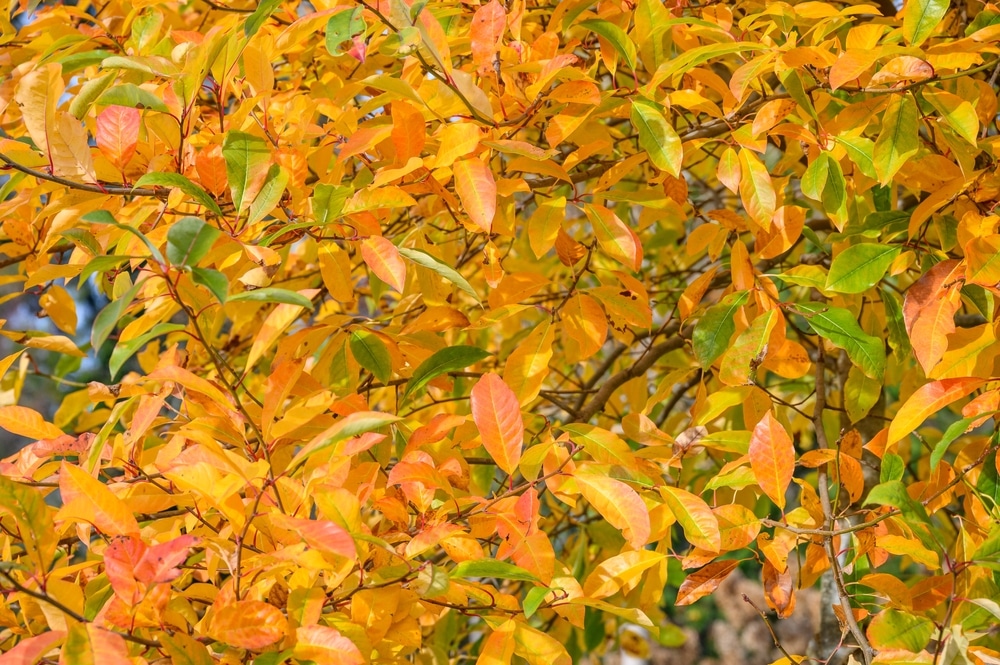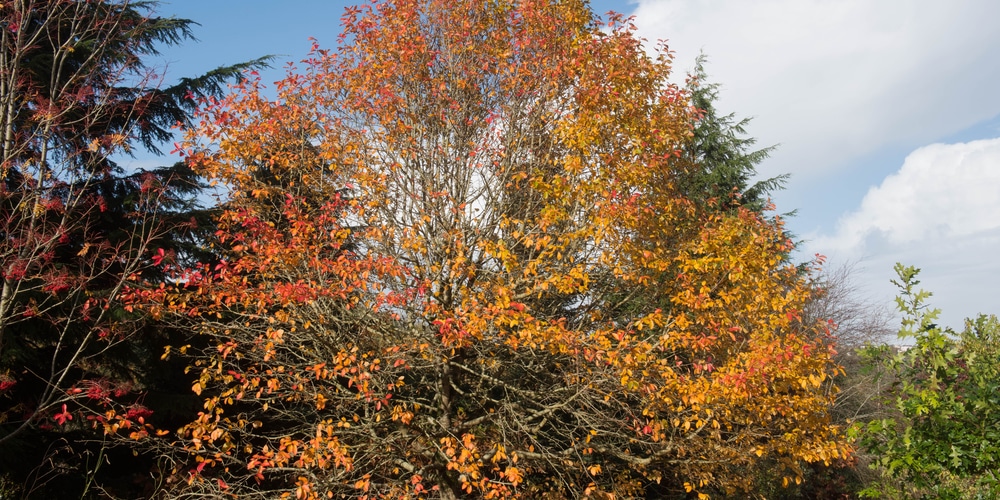Aptly named for its deep red leaves, the wildfire black gum tree, or the black tupelo, is a renowned tree used in landscaping. Primarily valued for their bright red color and refined pyramidal growth pattern, one can find wildfire black gum trees throughout the eastern United States.
Depending on the gardening experience, the climate, and the overall aesthetic, there are many different pros and cons of planting black gum trees. We’ll cover them all, as well as some tips and tricks.
General Description

With black bark that stands out, these trees are notable for their deep green leaves that turn from red in the spring to crimson towards fall. These deciduous trees also grow up to 50 feet tall and can live for up to 70 years.
Black gum trees naturally grow as far west as Arkansas and East Texas, and their range stretches from Vermont to Florida. These trees produce squishy bluish-purple berries that wildlife like birds and squirrels eat. Thus, the black gum tree will attract wildlife to your yard.
How to Care for Black Gum Trees
These trees grow best in partial to full sunlight and with a regular water supply. While these trees acclimate to season changes, gardeners should regularly water juvenile trees and keep the soil moist during dry spells.
Black sum trees are tolerant to many soil types but prefer loamy soil with an acidic pH and good drainage. However, these trees survive well in gravelly, sandy, or clay soil.
Give these trees 2 cups of fertilizer per every inch in diameter of the trunk. Slow-release granular fertilizers will provide the best nutrients for these trees.
Because they are native to eastern North America, wildfire black gum trees are resistant to deep frosts and tolerant of warm weather. Generally, these are low-maintenance trees that only need pruning in late winter once the threat of deep frost has passed. However, due to their seeds falling, these trees are messy and should not be planted where there is a lot of foot traffic.
Pros of Planting Wildfire Black Gum Trees
- Have a beautiful and unique red color nearly year-round.
- The joints of these trees are more robust due to their considerably thin boughs, so they are hearty in many types of weather.
- The trees are difficult to split with an axe and can withstand accidental impacts.
- These trees have no specific pests or diseases.
Cons of Planting Wildfire Black Gum Trees
- Because of their tall height, do not plant these near electrical cables.
- Propagating them is difficult, and gardeners typically must purchase juvenile black gum trees.
- These trees are not easy to find in nurseries despite their popularity.
- Their fruit falls often and gets messy.
How to Choose the Right Tree
Choosing the right plants comes down to asking the right questions. The allotted space, height restrictions, and overall effect usually become the defining factors. However, other factors like the shape, maintenance needed, and site conditions can also be determining factors.
To choose the correct tree, determine what space allotment the space has. Then, ensure that the leaves and roots have enough room to grow since trees have both aboveground and belowground biomass. Remember to check neighboring tree types and heights since plants compete for resources.
Consider the available soil conditions and any special care required for the tree of interest. Light and water exposure, space constraints, drainage, and human activity are all considerations needed before planting. Finally, consider the climate, both current and predicted future climate changes, since trees live for decades.
After mentally creating a priority list, check a tree guide before buying and planting your tree.
